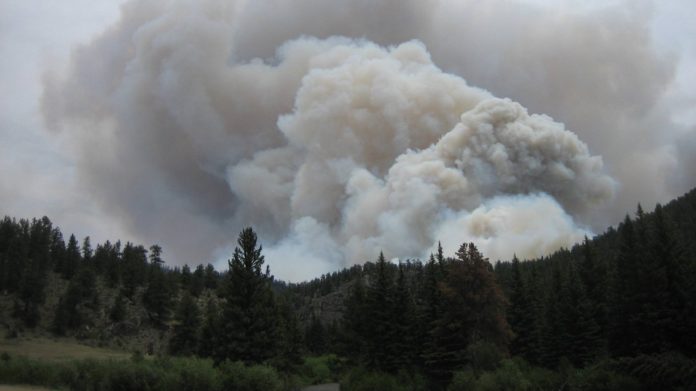British Columbia’s extreme wildfires in 2017 left widespread destruction among communities and wildlife. For a specialist group of scientists, however, these disasters caught their attention for a different reason: nuclear winters.
A new study published in Science by American researchers illustrates how these wildfires offer fresh insights into the terrifying climatic effects of nuclear war.
In August of that year, so much smoke plumed into the upper atmosphere that it formed a massive fire-breathing storm system — more formally known as a pyrocumulonimbus (pyroCb) — that circled most of the Northern Hemisphere.
This storm system carried an extraordinary amount of black carbon (soot), which absorbed radiation from the sun and heated the air which further pushed the smoke up into the stratosphere — a process known as ‘self-lofting’. The smoke was still detectable eight months later, not only due to the sheer volume of it but also because the stratosphere had no rain to wash it out.
The process of injecting soot into the stratosphere and its lifetime being extended by self-lofting is a core feature of nuclear winter models. It is theorized that soot would block direct sunlight, leading to an extreme cooling which would have devastating effects on global agriculture. These wildfires gave researchers the naturally-based experimental data they needed to validate the theory.
“We had never observed it actually happen,” commented co-author Alan Robock. “This natural occurrence validated what we had done before in our climate models, so it gave us more confidence that what we were doing was correct.”
Using a climate model sourced from the National Center for Atmospheric Research, the team paired this with satellite data and forecasted the progression of the pyroCb. The model took into account things like the ratio of soot to other components and the rate at which stratospheric ozone broke down the smoke.
The pyroCb contained 0.3 million tonnes of soot, but a nuclear war between India and Pakistan would produce around 15 million tonnes of soot. If it were the US and Russia at war, the figure would be upwards of 150 million tonnes.
“Even a relatively small nuclear war between India and Pakistan could cause climate change unprecedented in recorded human history and global food crises,” he adds.
The team also explored the photochemical loss of organic carbon, which involves molecules being broken down by sunlight in the wake of a nuclear blast. They discovered that even though this process occurs, reactions like this don’t render organics in smoke irrelevant as predicted.
“Most nuclear winter studies have assumed that the organics in smoke can be ignored because of their rapid loss from photo-chemical reactions,” say the authors. “This study calls that assumption into question given the observed persistence of the smoke in the 2017 fire plume.”
Robock and his colleagues are driving on by developing simulations to deepen our understanding of nuclear winters and their impact. Although the work and its findings are generally grim, the authors have commented that it is something of a necessary evil to underline the nightmarish consequences of a nuclear winter.








































